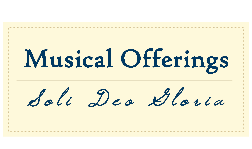Publication Date
6-26-2015
Document Type
Article
Keywords
Oral transmission, oral tradition, aural/oral culture, musical transmission, late modern oral tradition
Abstract
There are a number of misunderstandings about ancient oral transmission that negatively affect the way musicians view music history but also the process of how music was and currently is conceived, recorded, and shared. A common misconception is that oral transmission of music is an ancient practice that occurred before written notation of music was developed. However, I seek to prove that there is a false dichotomy between oral transmission and written notation and I focus on the changing definition and importance of oral tradition. Firstly, I discuss the misconceptions of ancient oral transmission. Secondly, I examine the continuing development of research and definitions of oral transmission—which is changing our concept of ancient as well contemporary oral traditions. Thirdly, I demonstrate how these traditions are still relevant in present, late modern times. Thoughout this discussion I examine and engage with the pivotal specialists and research that has developed our view of oral tradition through time. To better understand these scholars’ commentary as well as my own, it is important to note the combined concepts of oral and aural tradition. Oral culture refers to what is spoken and sung, and aural culture refers to what is heard and comprehended. Both are necessary for effective transmission to occur, and oral and aural methods are almost always simultaneously present in most societies. When aural culture is discussed here, it refers to the combination of both elements and is closely related to aural tradition. The most notable terms to differentiate are oral transmission and oral tradition. Typically oral transmission refers to the basic action of passing information, in this case music, through oral and aural means. Oral tradition, however, is the more general concept that synthesizes oral transmission, tradition, and culture. Despite misconceptions that music was primitive before composers started documenting it, oral transmission and tradition is actually an advanced method that is still incorporated in music today.
Volume
6
Issue
1
DOI
10.15385/jmo.2015.6.1.2
Recommended Citation
Patterson, Emma E.
(2015)
"Oral Transmission: A Marriage of Music, Language, Tradition, and Culture,"
Musical Offerings: Vol. 6:
No.
1, Article 2.
DOI: 10.15385/jmo.2015.6.1.2
Available at:
https://digitalcommons.cedarville.edu/musicalofferings/vol6/iss1/2
Creative Commons License

This work is licensed under a Creative Commons Attribution-Noncommercial-No Derivative Works 4.0 License.
Disclaimer
The CedarCommons repository provides a publication platform for fully open access journals, which means that all articles are available on the Internet to all users immediately upon publication. However, the opinions and sentiments expressed by the authors of articles published in our journals do not necessarily indicate the endorsement or reflect the views of Digital Services, the Centennial Library, or Cedarville University and its employees. The authors are solely responsible for the content of their work. Please address questions to the Digital Services staff.
Included in
Ethnomusicology Commons, Fine Arts Commons, Music Education Commons, Musicology Commons, Music Pedagogy Commons, Music Performance Commons, Music Theory Commons


